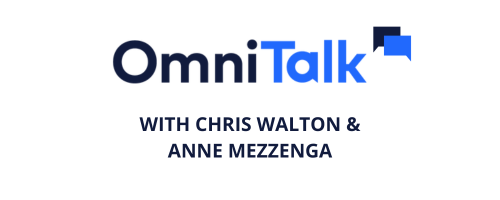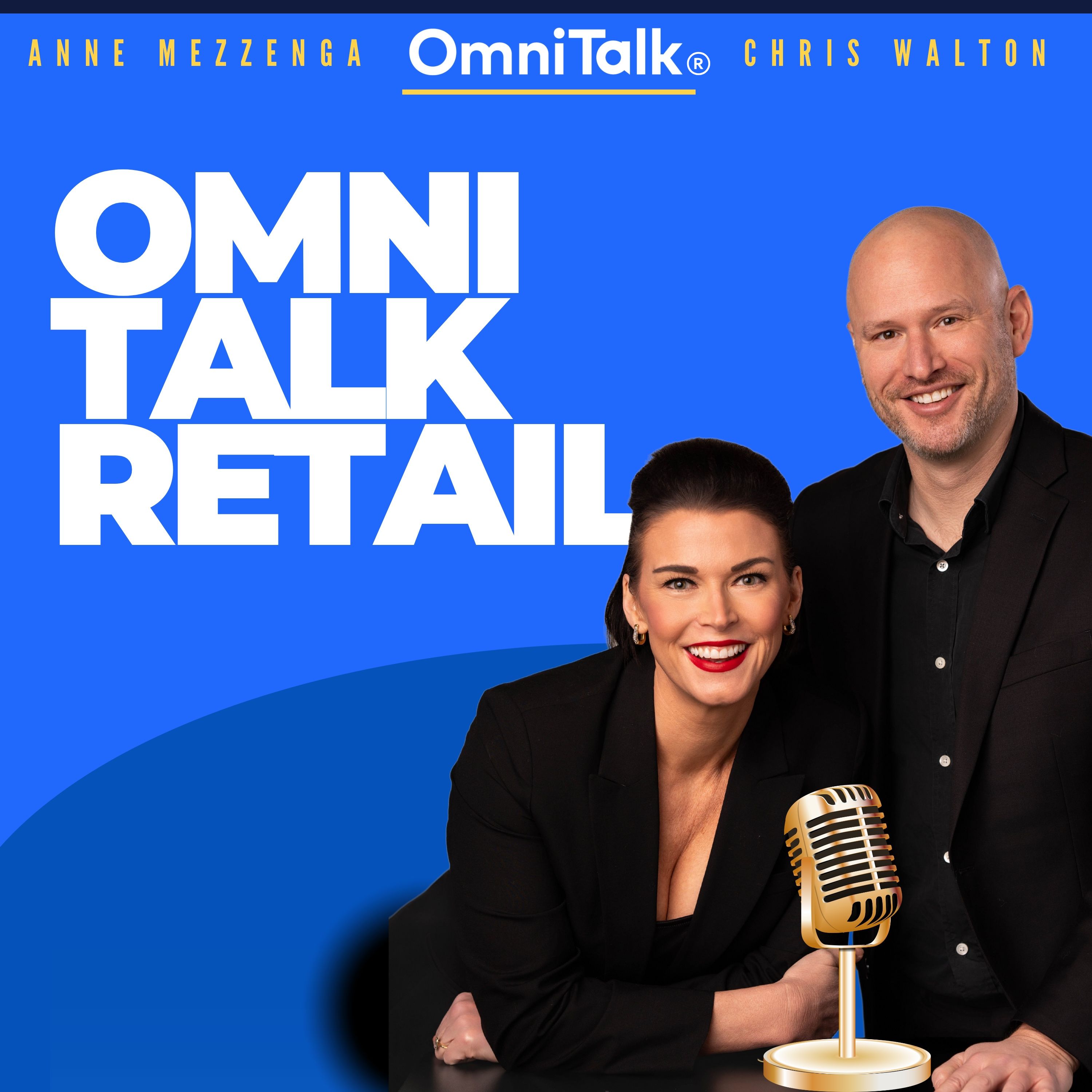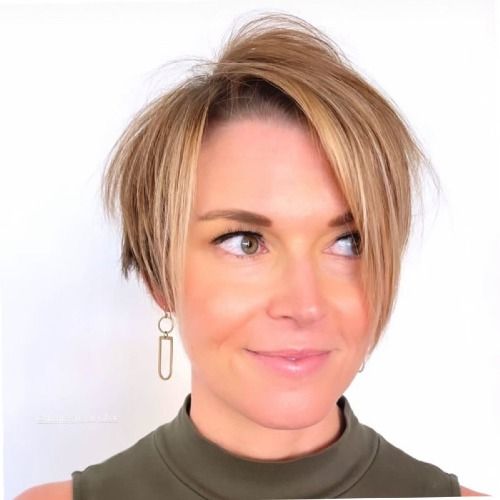From CPG to Grocery: SpartanNash CMO on Banner Strategy & Retail Media Networks
Meet Erin Storm, SVP and Chief Marketing Officer at SpartanNash, as she shares insights from her transition from 18 years at Kellogg/Kellanova to leading marketing for 200+ grocery stores and more. Discover how SpartanNash approaches banner differentiation, building retail media networks, and adapting to emerging food trends like GLP-1 driven demand.
🕒 TIMESTAMPS:
0:00 - Erin's CPG background at Kellogg/Kellanova
1:39 - Transition from CPG to grocery retail
2:43 - Marketing challenges across 200 disparate stores
4:49 - Banner bucketing strategy for community grocers
6:19 - Data and loyalty program integration
7:09 - Retail media network development
8:12 - Current food and grocery shopping trends
9:20 - GLP-1 impact on protein and health foods
10:28 - Future trends: Food as medicine vs. nostalgic favorites
Thanks to Simbe for making our SpartanNash Conference coverage possible!
#RetailMarketing #SpartanNash #CPGMarketing #RetailMedia #GroceryTrends #BrandManagement #EcommerceStrategy #FoodTrends #RetailConference #GroceryMarketing
This podcast uses the following third-party services for analysis:
Podcorn - https://podcorn.com/privacy
Transcript
Hello, everyone, this is Omnitalk Retail.
Speaker A:I'm Chris Walton.
Speaker B:And I'm Anne Mazinga.
Speaker A:And we are coming to you live from the symbiont Omnitalk podcast studio at the Spartan Nash Conference in beautiful sunny Grand Rapids, Michigan.
Speaker A:And we are pleased to introduce our next guest, Aaron Storm.
Speaker A:Aaron is the SVP and Chief Marketing Officer at Spartan Nash.
Speaker A:So, Aaron, thank you for joining us.
Speaker C:Thank you for having me.
Speaker A:It's great to see you.
Speaker B:You too, Erin.
Speaker B:It's your first time ever on omnitalk, so welcome.
Speaker B:First of all.
Speaker C:Thank you.
Speaker B:Second, would you please introduce yourself and give us a little bit about your background, which I see is steeped in cpg, but tell our audience who you are.
Speaker C:Sure, you've got that right.
Speaker C:Steeped, Steeped, steeped for a long time.
Speaker C:So, yeah, I've been at Spartan Nash for just under a year now, but before that, 18 years at Kellogg Kelanova.
Speaker B:Okay.
Speaker C:So worked mostly across all the different businesses.
Speaker C:Brands like Cheez It, Eggo, Froot Loops, a lot of iconic brands over there at the Kellogg Kellanova portfolio.
Speaker C:And I also spent four years working on serial innovation, so new product development.
Speaker B:Okay.
Speaker C:And also had a role in sales and in commercial strategy.
Speaker C:So really learned a lot working in the CPG space and really got all elements of the business.
Speaker C:So full business exposure.
Speaker C:So it's a really great experience.
Speaker B:That's fantastic.
Speaker A:So then, so then what draws one to the distribution and grocery space?
Speaker A:I'm curious, like, and what is surprise?
Speaker A:I mean, you've been in a year on the job too, right?
Speaker A:So what drew you to that and what surprised you the most in this first year?
Speaker C:So actually before I was at Kellogg's, I was actually with Aramark, which is in service.
Speaker A:Okay.
Speaker C:Close.
Speaker C:And my dad was a mushroom grower, so grew up farming.
Speaker C:So I've really been with food my entire career and life, really.
Speaker C:And so I really wasn't ready to leave that and saw this retail food distribution as just another way to build my skill sets and like somewhat adjacent business.
Speaker B:Yeah, absolutely.
Speaker C:So I actually, when I, when I arrived, I thought it was going to be a much harder transition.
Speaker C:I'm like, I don't really know.
Speaker C:I haven't worked in the retail space, but it was actually a lot easier than I thought.
Speaker C:Just in the sense that it's the same conversation but just from the other side of the table.
Speaker C:Right, right.
Speaker C:So it was, it was not as hard as I thought.
Speaker C:Something that surprised me though was how little brand management there is.
Speaker C:So there's a lot of marketing execution, but not as much of that long term planning that you maybe see in the cpg space.
Speaker A:Right.
Speaker C:So that's something that I'm bringing to the table Now.
Speaker C:I've reorganized the team and added in actually more insights.
Speaker C:So make sure we're grounded in the shopper and brand management roles into the organization.
Speaker C:So I'm hiring.
Speaker C:I've got a lot of open roles to build up that capability in the team.
Speaker A:So that's one thing that surprised you.
Speaker A:I'm curious because I'm surprised.
Speaker A:I've never met a mushroom farmer before.
Speaker A:What varieties of mushrooms did your father specialize in?
Speaker A:Just out of curiosity?
Speaker C:I mean, you're gonna get me started now.
Speaker B:I'm a person to ask her that question.
Speaker C:So.
Speaker C:No, my dad, my dad just grew traditional white button mushrooms, but my mom actually has a store called the mushroom cap where she sells all varieties of mushrooms in her store.
Speaker C:So she's got, you know, creminis and baby bellas and shiitakes.
Speaker C:Shiitakes, maitakes, enokies, all the mushrooms.
Speaker B:Any kind of mushroom.
Speaker C:Yeah.
Speaker C:Yeah.
Speaker B:Well, I'm gonna take it back to retail and marketing for a second.
Speaker C:Oh, okay.
Speaker B:Why we're here, I do my dad also lease space to mushroom growers.
Speaker C:Oh, my God.
Speaker C:We'll have to talk offline.
Speaker B:Also interested in marketing.
Speaker C:Okay.
Speaker B:Especially when you talk about, you know, your responsibility for handling marketing e commerce digital experiences for 200 Spartan Nash stores.
Speaker C:Yep.
Speaker B:Tell us a little bit about some of the challenges that you're looking at right now and some of the things that have had population impacts when you're working across 200 disparate locations.
Speaker B:Sure, sure.
Speaker C:Yeah.
Speaker C:So the way we have the marketing team organized, we've got our own brand.
Speaker C:Business also falls under marketing and then retail marketing.
Speaker C:And so those are sort of our two businesses.
Speaker C:And then we have a center of excellence which includes things like E comm that supports both of those pieces of the business.
Speaker C:So from the own brand side, it's kind of like a mini cpg within a real retail space.
Speaker C:I have to sell in my products to my category managers just like I would in a cpg space.
Speaker C:So we've got to make sure we've got innovations that are growing the category.
Speaker C:And, you know, we've got to make sure we're marketing our brands in a way that is, you know, of interest to shoppers.
Speaker B:Yeah.
Speaker C:Then on the retail side, you know, across those 200 stores, we've got several banners, which is what drives some complexity.
Speaker C:But at the same time, we're a community grocer and a lot of times those names have meaning in those local communities.
Speaker C:So to wipe away all of that equity and to say, hey, we're just gonna call everything family fair, it kind of takes away a little bit of that community involvement and engagement.
Speaker C:So what we're doing is now bucketing our banners.
Speaker C:So if it's a mainstream banner versus an upmarket banner, each one of those banners does not need a completely different way to go to market.
Speaker C:It just needs to be relevant with the shopper base that it is serving.
Speaker C:So I might have five banners that I put in one bucket and execute it all the same way with the only differences being really the creative nuances and logos and things like that.
Speaker C:So I don't need all completely different go to market strategies.
Speaker C:I just need to sort of bucket them into different groups.
Speaker C:And so that's the work that we're doing right now to figure out how to differentiate those banners without completely doing different marketing campaigns across all of them.
Speaker B:And how does that work on the reverse side too then when you have, you have brands kind of trying to sell and do you do the brands and CPGs work with you and to try to understand what those buckets are so they know like how to position their product in those.
Speaker C:So this is a new process we're going through right now.
Speaker C:And so we will look at things like assortment.
Speaker C:So even within my own brand's portfolio, we've got Finest Reserve, which is more of a premium offering.
Speaker C:I may put more distribution of that in my upmarket stores and fewer in the mainstream.
Speaker C:It doesn't mean I shouldn't have it, but what's that?
Speaker C:Right.
Speaker C:Balance.
Speaker C:And so we just presented yesterday to the vendors about the idea that we're going to be separating like this and give more opportunities to differentiate across our programming.
Speaker C:So we're not all the way there yet.
Speaker C:That's the journey we're on, right?
Speaker B:Yeah.
Speaker A:How do you think about data within that context too, Aaron?
Speaker A:Like in terms of the marketing programs, the loyalty programs that you create across all those, you know, locations across the country?
Speaker C:Yeah, I mean we pull all of that data together and use it as one, as one broader audience.
Speaker C:I mean, we do a lot of geo also.
Speaker C:So, you know, the banners that are in certain markets are only going to market to those, to those markets.
Speaker C:So we, I mean we are also working on, you know, our website and our capabilities to build up our first party data.
Speaker C:Yep.
Speaker C:We are launching a lot of personalized offers and obviously the more that we can collect of that data and the more we can learn about our shoppers, the more relevant the offerings we can give them.
Speaker C:But we do still have a lot of work to do on collecting more of that data and getting all of our, our e Comm and our loyalty in a better place.
Speaker A:And how do you think about that from a retail media design standpoint, do you think?
Speaker A:Because, because you said all the brands have their own uniqueness in the local markets.
Speaker A:Do you think of retail media like one to one in that way or do you think of it more holistically across the Spartan ash portfolio?
Speaker A:Like how do you look at that?
Speaker C:Yeah, from a retail media.
Speaker C:And that's another.
Speaker C:We're standing up a retail media network right now.
Speaker C:But we will, we're again pulling all of those together.
Speaker C:So when we've got someone and we'll.
Speaker C:And it's based on targeting.
Speaker C:Right.
Speaker C:So if you're looking for a certain type of shopper, it might be a shopper at Family fair, it might be a shopper at bg.
Speaker C:So it's less about one specific banner and all of their shoppers.
Speaker C:It's, you know, if I'm looking for a mom with kids or if I'm looking for, you know, somebody who's looking for something on the grill.
Speaker C:So it's, it would be more consumer based than banner based.
Speaker A:That makes sense.
Speaker C:But it's all one pool considered, one pool that we can, that we can.
Speaker A:Draw what the brands care about.
Speaker A:Ultimately, at the end of the day.
Speaker C:We want to get them the most scale that we can in the target that they're trying to reach.
Speaker B:Well, Aaron, I'm curious because of your visibility then to both the retail side of things and the CPG side of things and you're, you're bucketing what you're selling in each store now by region, which is really cool, that you can offer your customers that.
Speaker B:What are some of the trends that you're noticing both in CPG and in just how people are shopping for food and groceries?
Speaker C:Yeah, I mean I think this is where I think a lot of the headlines talk about price.
Speaker C:Everybody wants to talk about price.
Speaker C:Price.
Speaker C:Price is very important, but it's also what benefits are you getting along with that price?
Speaker C:So when we think about that banner architecture and bucketing our banners together, it's what's the right combination of price and benefits to give the shopper the value that they're looking for.
Speaker C:So if you're a time starved shopper, you might be more interested in the fact that you can order groceries online and have them delivered to you or pick them up.
Speaker C:Or if you are somebody who's looking to have people to your house, you might be more interested in fresh made items like our store made brats from our brat shop or our deli made fresh salads.
Speaker C:So it's really about that combination of benefits based on what that shopper is looking for than saying there's just one thing.
Speaker C:And so that's what we're working to right now is making sure we've got that right combination of elements to serve the customer's needs.
Speaker B:Are there any things that you notice that people are buying more of?
Speaker B:Like looking around this place?
Speaker B:There's functional food and beverages, there's all these things.
Speaker B:Like any specific products that you're seeing people start to gravitate more towards?
Speaker C:I mean, we have in the past, yes, we are certainly seeing more of the, you know, protein with the GLP1.
Speaker B:Yeah.
Speaker C:So there's a lot of the protein, the smaller serving sizes and things like that that we're starting to see a disproportionate amount of growth.
Speaker C:We're not doing anything specific to market to that audience right now.
Speaker C:I think that's just one of those trends that's happening in the, in the broader culture that is driving shoppers to look for those needs.
Speaker C:But that is something with our own brand portfolio.
Speaker C:We don't really have an own brand portfolio that is targeting healthier offerings.
Speaker C:And so that's an area we're looking at too.
Speaker C:Are there white spaces to offer more, more things in those spaces?
Speaker A:Right to that point, one of the last questions I was going to ask you was, you know, we just had a great podcast conversation with a consultancy group that we do a lot of work with, the AM Consumer and Retail group.
Speaker A:And it was about space planning in grocery and the needs for, for grocers to really think about their space planning in their stores, you know, for the long term based on the trends that they're seeing convergence.
Speaker A:So I'm curious, is there one trend that you say when you look out five to ten years from now you think will impact, you know, grocers more so than others, or maybe that's not getting as much credence as it probably deserves right now?
Speaker C:I mean, I think that the, the health space is going to continue to evolve like medicine?
Speaker A:That.
Speaker C:Yeah.
Speaker C:I mean, but I think in general, I think when we think about assortment more broadly, I think we too often go to bringing in all the new things just because they're new and we sometimes don't give enough space to the things that our everyday needs that people are going to continue to know and love.
Speaker C:So there's also that, like, what's that right balance of this new jump on the trend to, like, having the right amount of facings of some of the things that, you know, shoppers are really interested in.
Speaker C:But it's also not all about health.
Speaker C:Like Bomb Pops, which have been around forever.
Speaker C:Right.
Speaker C:Are now all of a sudden, like, kids are acting like they're the greatest new thing and they've come out with all these flavors.
Speaker C:But it's like at the same time, most people still are wanting, you know, the regular Bomb Pop.
Speaker A:I always want that sweet indulgence.
Speaker C:Yeah.
Speaker C:So I love that Bomb Pops are coming back and kids are thinking that they're like a brand new item.
Speaker A:Right, right, right.
Speaker A:That makes sense.
Speaker A:That makes sense.
Speaker C:Yeah.
Speaker A:But it's definitely top of mind.
Speaker A:The whole, the healthy trends, the food is medicine trends.
Speaker A:That's something that you're definitely thinking about.
Speaker A:Okay.
Speaker C:For sure.
Speaker B:Well, Aaron, thank you so much for taking the time with us today, for sharing your background, all of your knowledge with our audience at omnitalk.
Speaker B:Thank you again to Simby and Spartan Nash for having us here at the Food Expo.
Speaker B:And until our next interview, be careful out there.



